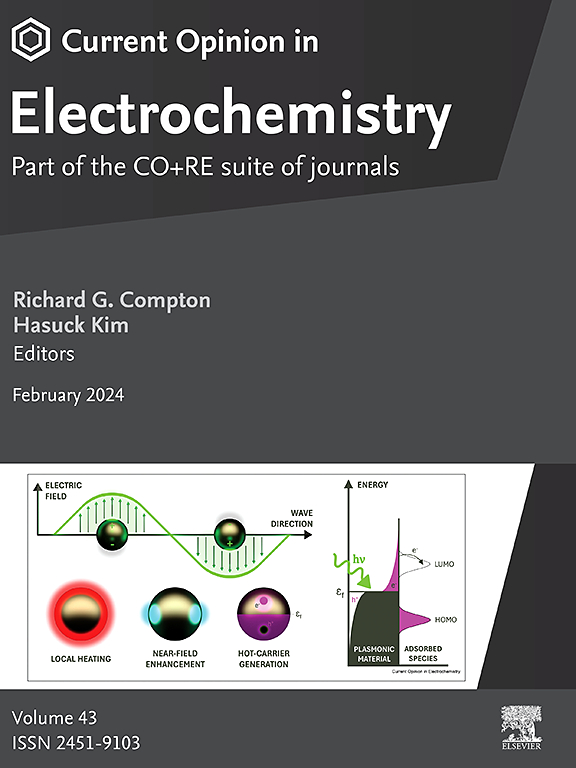Innovating carbon-based electrodes for direct neurochemical detection along the brain-immune axis
IF 7.9
2区 化学
Q1 CHEMISTRY, PHYSICAL
引用次数: 0
Abstract
The use of carbon-based electrodes for direct neurochemical detection along the brain-immune axis is emerging as a promising frontier. Carbon is commonly chosen as an electrode material due to its numerous advantages, including cost-effectiveness, high electrical conductivity, excellent chemical stability, wide electrochemical window, and biocompatibility. To further enhance performance, carbon fibers have been coated with nanomaterials including carbon nanotubes (CNTs), graphene, carbon nanospikes, among others. Traditional carbon electrodes—typically constructed from carbon fibers—are limited by their heterogeneity, which restricts their adaptability. Recent advancements have moved toward developing highly sensitive and selective carbon materials through customization. The current research is increasingly focused on developing alternative materials to replace carbon fibers, with the aim of preventing coating degradation, improving sensitivity, achieving frequency-independent properties, and lowering detection limits. This current opinion discusses the key innovations in modern carbon-based materials for brain-immune studies, with an emphasis on the importance of tailoring surfaces for specific analytes and applications.
创新碳基电极,沿脑免疫轴进行直接神经化学检测
利用碳基电极沿脑免疫轴进行直接神经化学检测正成为一个有前途的前沿。碳具有成本效益高、导电性好、化学稳定性好、电化学窗口宽、生物相容性好等优点,因此被广泛地用作电极材料。为了进一步提高性能,碳纤维被涂上了纳米材料,包括碳纳米管(CNTs)、石墨烯、碳纳米尖刺等。传统的碳电极通常由碳纤维构成,由于其非均质性而限制了其适应性。最近的进展是通过定制开发高灵敏度和选择性的碳材料。目前的研究越来越侧重于开发替代碳纤维的材料,以防止涂层降解,提高灵敏度,实现与频率无关的性能,并降低检测限。本文讨论了用于脑免疫研究的现代碳基材料的关键创新,强调了为特定分析物和应用量身定制表面的重要性。
本文章由计算机程序翻译,如有差异,请以英文原文为准。
求助全文
约1分钟内获得全文
求助全文
来源期刊

Current Opinion in Electrochemistry
Chemistry-Analytical Chemistry
CiteScore
14.00
自引率
5.90%
发文量
272
审稿时长
73 days
期刊介绍:
The development of the Current Opinion journals stemmed from the acknowledgment of the growing challenge for specialists to stay abreast of the expanding volume of information within their field. In Current Opinion in Electrochemistry, they help the reader by providing in a systematic manner:
1.The views of experts on current advances in electrochemistry in a clear and readable form.
2.Evaluations of the most interesting papers, annotated by experts, from the great wealth of original publications.
In the realm of electrochemistry, the subject is divided into 12 themed sections, with each section undergoing an annual review cycle:
• Bioelectrochemistry • Electrocatalysis • Electrochemical Materials and Engineering • Energy Storage: Batteries and Supercapacitors • Energy Transformation • Environmental Electrochemistry • Fundamental & Theoretical Electrochemistry • Innovative Methods in Electrochemistry • Organic & Molecular Electrochemistry • Physical & Nano-Electrochemistry • Sensors & Bio-sensors •
 求助内容:
求助内容: 应助结果提醒方式:
应助结果提醒方式:


